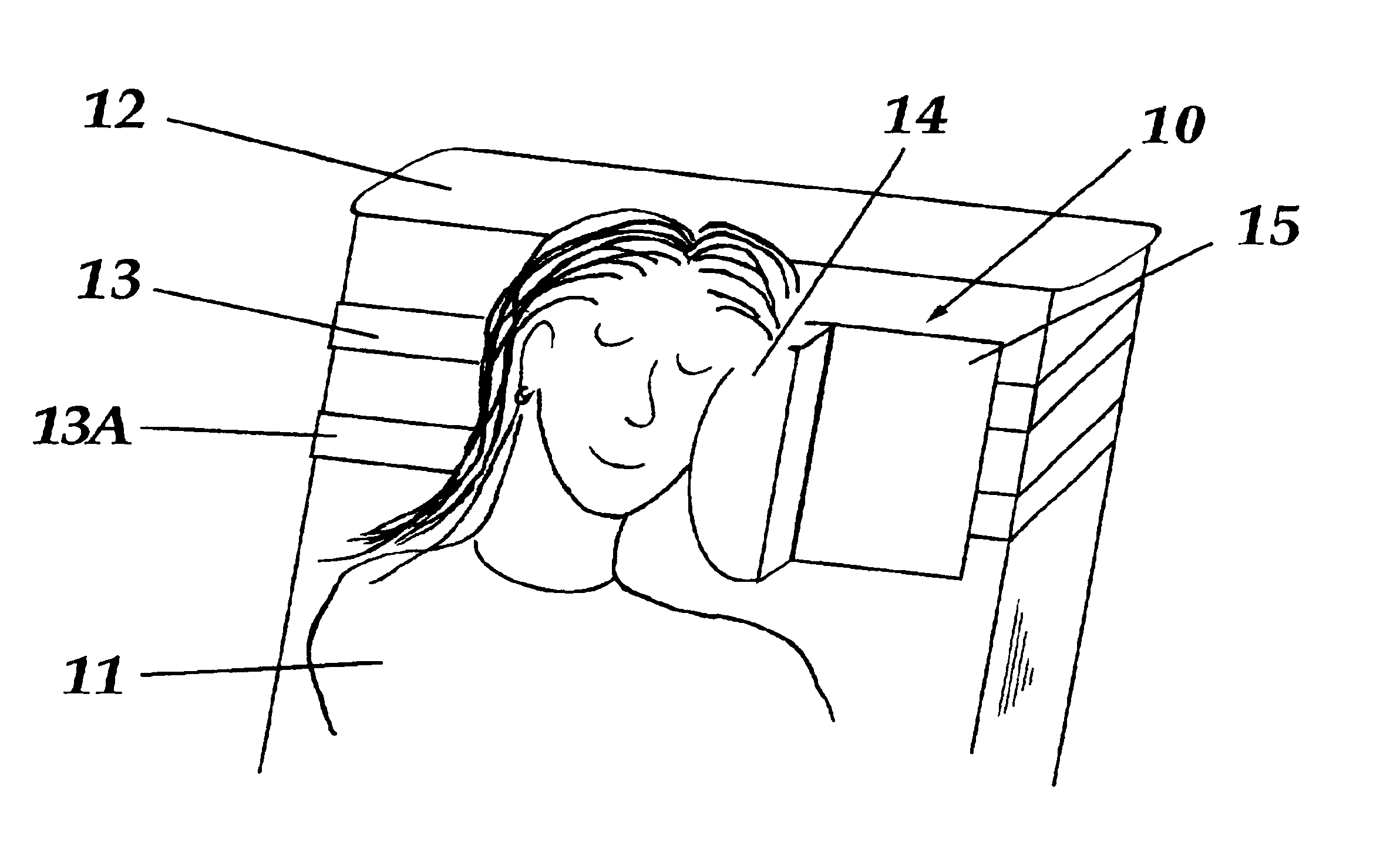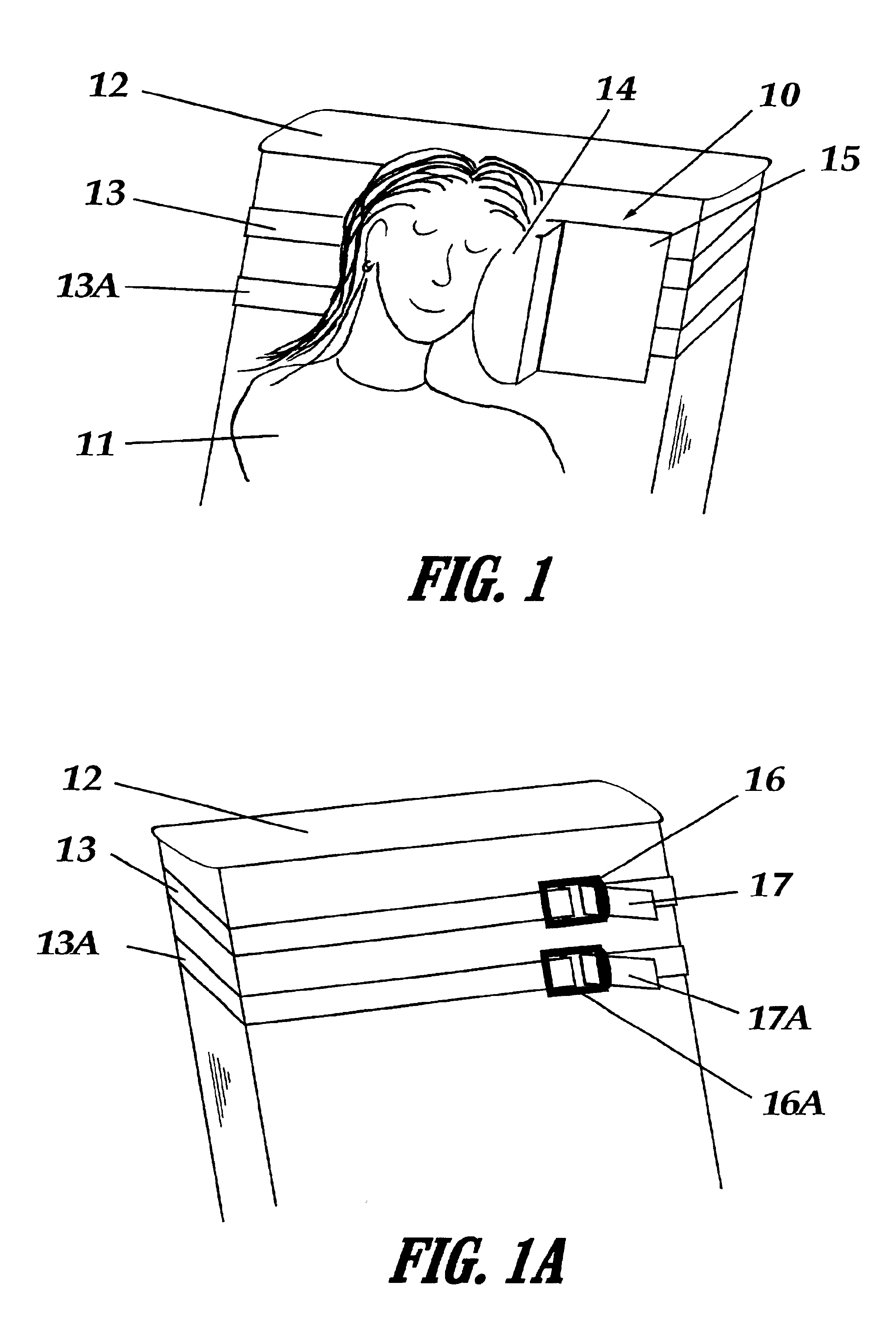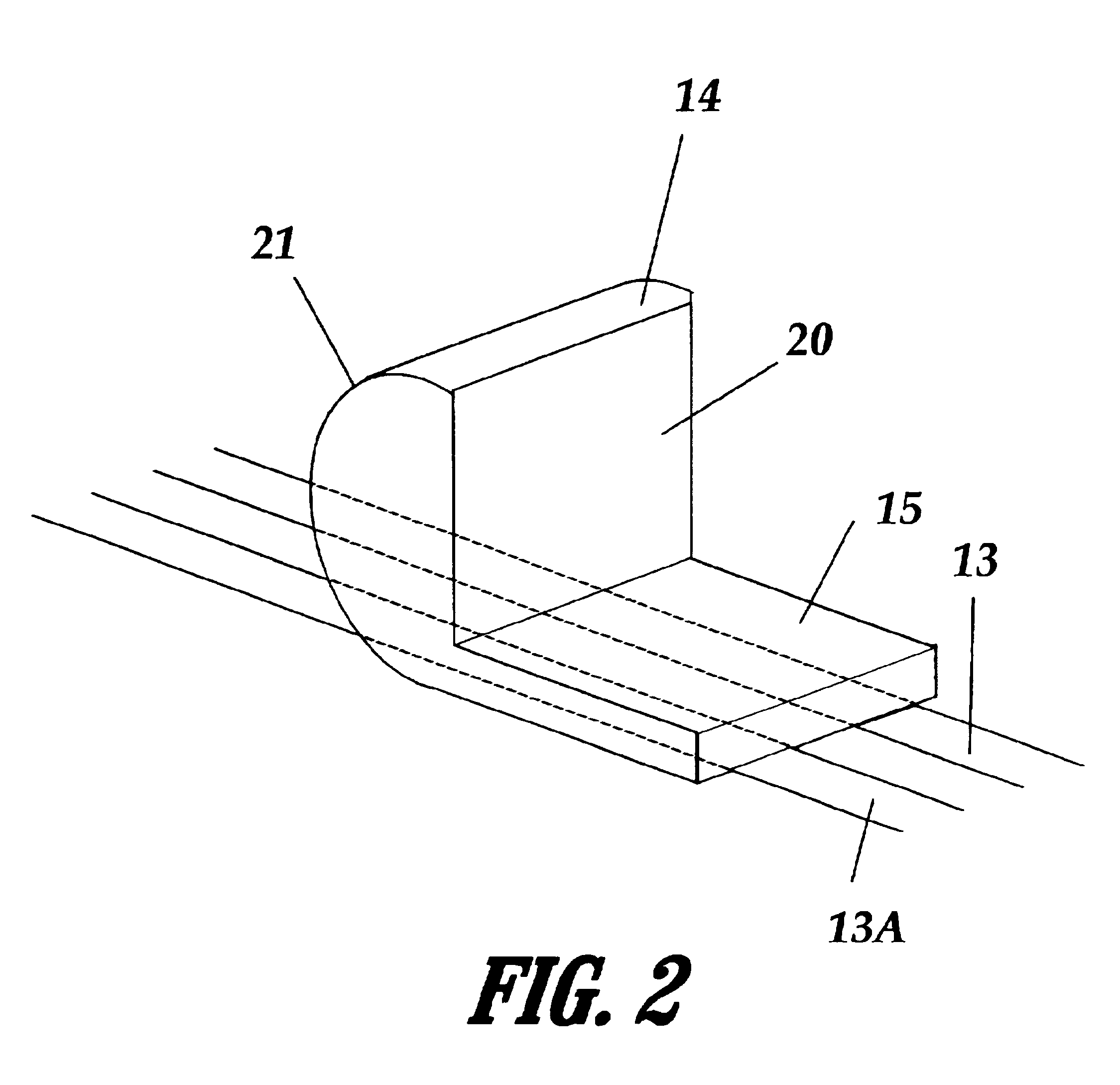Portable lateral-support headrest
a lateral support and headrest technology, applied in the field of headrests or cervical supports, can solve the problems of waking passengers, waking passengers, and waking passengers, and achieve the effect of greater lateral suppor
- Summary
- Abstract
- Description
- Claims
- Application Information
AI Technical Summary
Benefits of technology
Problems solved by technology
Method used
Image
Examples
Embodiment Construction
[0035]The following description relates to the preferred embodiment and certain alternative embodiments of the invention and is for the purpose of describing the invention's general principles. The invention's scope is to be determined by the claims, and the ensuing description should not be construed in a limiting sense.
Description of Preferred Embodiment
[0036]FIG. 1 shows a user 11 laying her head against a headrest 10. The headrest is secured to a seat back 12 by means of straps 13 and 13A. The straps completely encircle the seat back, holding the headrest securely against the surface of the seat back, and, lying flat, pass underneath the user's head so that there is no pushing forward of the head or discomfort to the user. Such straps are preferably made of nylon webbing of the kind used for straps on backpacks or gym bags. The headrest comprises two main portions, base portion 15 and head-support portion 14. The head-support portion extends away from the surface of the seat bac...
PUM
 Login to View More
Login to View More Abstract
Description
Claims
Application Information
 Login to View More
Login to View More - R&D
- Intellectual Property
- Life Sciences
- Materials
- Tech Scout
- Unparalleled Data Quality
- Higher Quality Content
- 60% Fewer Hallucinations
Browse by: Latest US Patents, China's latest patents, Technical Efficacy Thesaurus, Application Domain, Technology Topic, Popular Technical Reports.
© 2025 PatSnap. All rights reserved.Legal|Privacy policy|Modern Slavery Act Transparency Statement|Sitemap|About US| Contact US: help@patsnap.com



